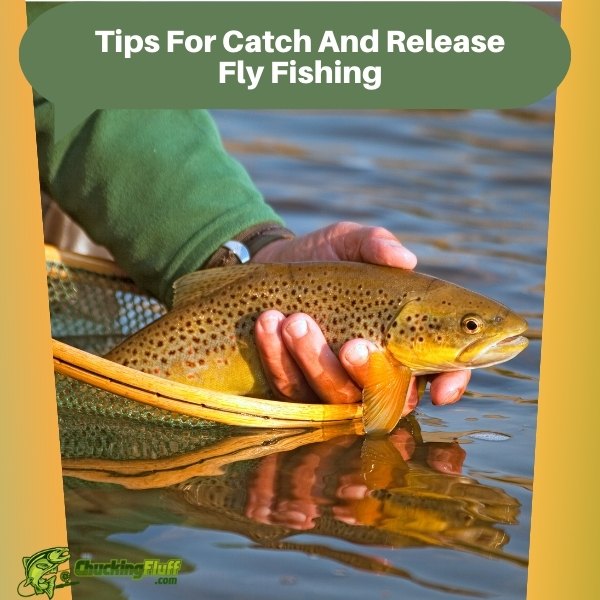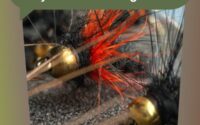| Disclosure: Just to be open and honest the buttons and links you click on in the website will in most cases take you to another website where you can purchase the products I am reviewing. As an Amazon Associate I earn from qualifying purchases. |
Tips For Catch And Release Ethical Angling Practices
Quick Post Navigation

Introduction to Catch and Release Fly Fishing
Fly fishing is not just about the thrill of the catch; it’s also about the responsibility of conservation. Catch and release fly fishing is a practice that promotes sustainability in angling by allowing fish to be caught and then safely returned to their habitat. This method not only ensures the preservation of fish populations but also maintains the health of ecosystems. In this guide, we’ll explore essential tips for successful catch and release fly fishing, from gear selection to proper handling techniques.
Choosing the Right Gear
Selecting the appropriate gear is crucial for effective catch and release fly fishing. Start by choosing a rod and reel that are well-suited to the type of fish you intend to catch. Opt for lightweight equipment that allows for precise casting and control. Additionally, using barbless hooks can make hook removal easier and minimize injury to the fish.
Understanding Fish Handling
Proper handling techniques are essential for minimizing stress on the fish during catch and release. When handling a fish, always wet your hands to avoid removing its protective slime layer. Support the fish gently and avoid squeezing or dropping it. If possible, keep the fish in the water while removing the hook to reduce its time out of its natural environment.
Selecting the Proper Location
Choosing the right fishing location is key to successful catch and release. Look for areas with healthy fish populations and suitable habitat conditions. Consider factors such as water temperature, oxygen levels, and the presence of underwater structures where fish might seek refuge.
Techniques for Hook Removal
Safely removing the hook from a fish is essential for its survival after release. Use tools like forceps or hemostats to grip the hook securely and minimize handling time. Avoid using excessive force, and if the hook is deeply embedded, consider cutting the line rather than attempting to remove it, as this can cause less harm to the fish.
Reviving and Releasing the Fish
Before releasing the fish, ensure that it is fully revived and able to swim away on its own. Hold the fish upright in the water, gently moving it back and forth to help oxygenate its gills. Once the fish shows signs of strong, steady movement, release it gently, allowing it to swim away at its own pace.
Best Practices for Catch and Release
To minimize harm to fish and maximize their chances of survival, it’s essential to follow best practices for catch and release. Avoid playing the fish to exhaustion, and handle them as little as possible to reduce stress. Always release fish quickly and with care, ensuring they have the best chance of recovery.
Environmental Conservation
Catch and release fly fishing plays a crucial role in environmental conservation by protecting fish populations and preserving aquatic habitats. By practicing catch and release, anglers can contribute to sustainable fishing practices and help maintain the health of aquatic ecosystems for future generations to enjoy.
Tips for Beginners
For novice fly fishers, catch and release can seem daunting at first, but with practice and patience, it can become second nature. Start by learning proper casting and presentation techniques, and gradually build your skills over time. Seek guidance from experienced anglers and always prioritize the well-being of the fish.
Common Mistakes to Avoid
Inexperienced anglers may make mistakes that can harm fish or diminish their chances of survival after release. Avoid using oversized or barbed hooks, which can cause unnecessary injury to fish. Additionally, never handle fish with dry hands or rough surfaces, as this can damage their delicate skin and scales.
Adapting to Different Species
Different fish species may require different handling techniques, so it’s essential to adapt your approach accordingly. Research the specific needs and behaviors of the fish you’re targeting, and tailor your methods accordingly. By understanding the unique characteristics of each species, you can increase your success rate and minimize harm to the fish.
Ethical Considerations
Responsible angling is not just about catching fish; it’s also about treating them with respect and consideration. Always adhere to fishing regulations and guidelines, and avoid engaging in practices that could harm fish or their habitats. By acting ethically and responsibly, anglers can help ensure the long-term sustainability of their favorite pastime.
Community Involvement
Getting involved in conservation efforts is a meaningful way to give back to the sport of fly fishing. Join local conservation organizations, participate in clean-up events, and volunteer your time to help protect fish habitats. By working together as a community, anglers can make a positive impact on the environment and ensure that future generations can enjoy the thrill of fly fishing in pristine natural environments.
Benefits Beyond Fishing
Catch and release fly fishing offers more than just the opportunity to catch trophy fish; it also allows anglers to connect with nature on a deeper level. Spending time outdoors, surrounded by the beauty of rivers and streams, can be a truly enriching experience. By practicing catch and release, anglers can help preserve these natural wonders for generations to come.
Conclusion
Catch and release fly fishing is not only a rewarding pastime but also a vital conservation practice. By following the tips outlined in this guide, anglers can enjoy the thrill of the catch while minimizing their impact on fish populations and aquatic ecosystems. Together, we can ensure that future generations have the opportunity to experience the joy of fly fishing in pristine natural environments.
FAQs
Q) How can I tell if a fish is ready to be released?
A) Watch for signs of strong, steady movement and responsive behavior. If the fish swims away easily on its own – once released, it’s likely ready to return to its habitat.
Q) Is catch and release fishing really beneficial for fish populations?
A) Yes, catch and release fishing helps maintain healthy fish populations by allowing individuals to reproduce and contribute to the gene pool. It also reduces the pressure on vulnerable species.
Q) Are there any specific regulations I should follow when practicing catch and release fishing?
A) Regulations vary depending on location and species, so it’s essential to familiarize yourself with local fishing laws and guidelines. This may include using barbless hooks, observing size limits, and practicing proper handling techniques.
Q) How can I improve my catch and release skills as a beginner?
A) Start by practicing proper casting and presentation techniques in a controlled environment. Seek guidance from experienced anglers or consider taking a fishing course. Remember, patience and persistence are key to mastering catch and release fishing.
Q) Can catch and release fishing have a positive impact on the environment beyond fish populations?
A) Absolutely! Catch and release fishing promotes environmental awareness and conservation ethics. By respecting fish and their habitats, anglers contribute to the overall health of ecosystems, benefiting not just fish but all living organisms within aquatic environments


